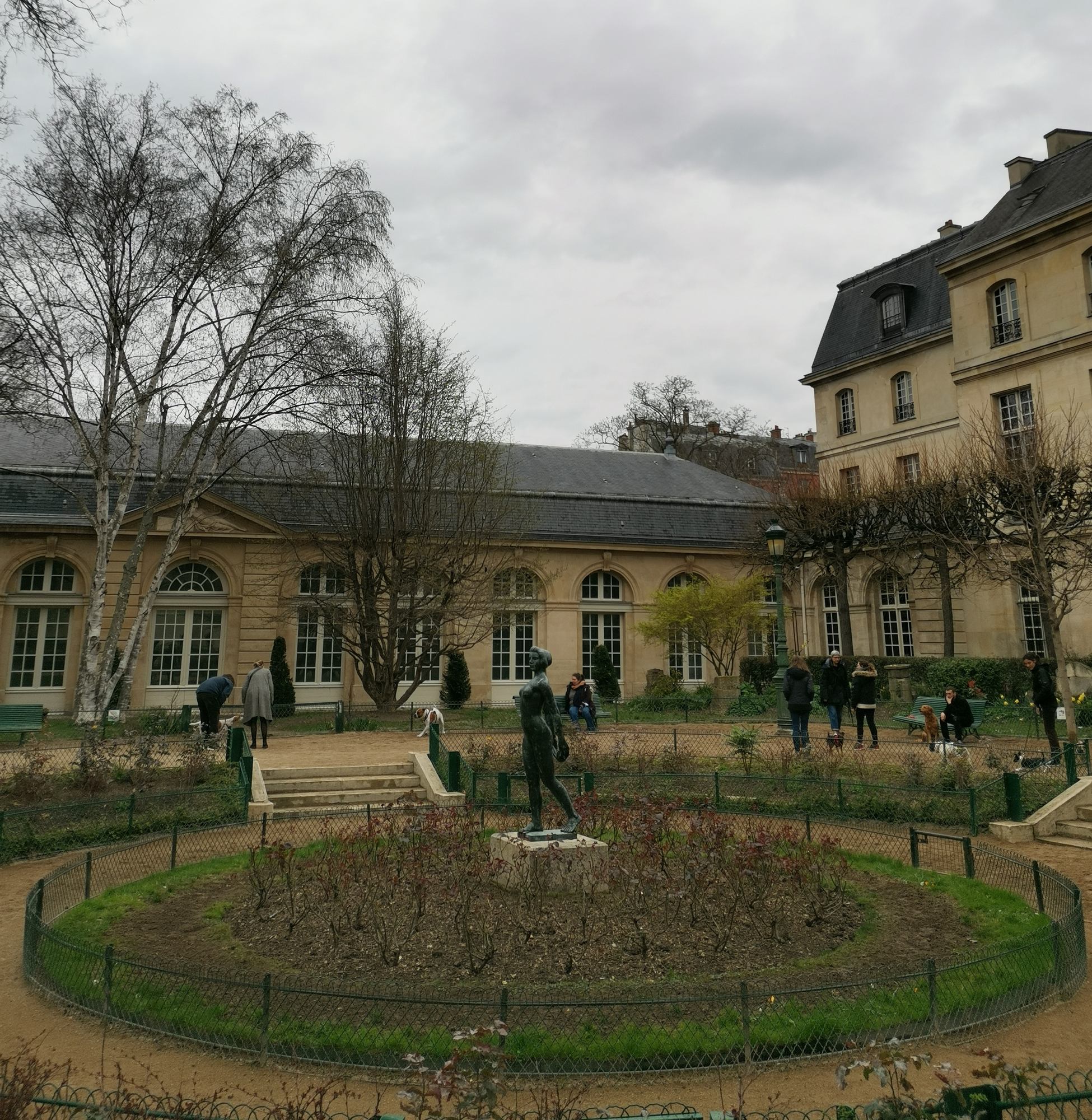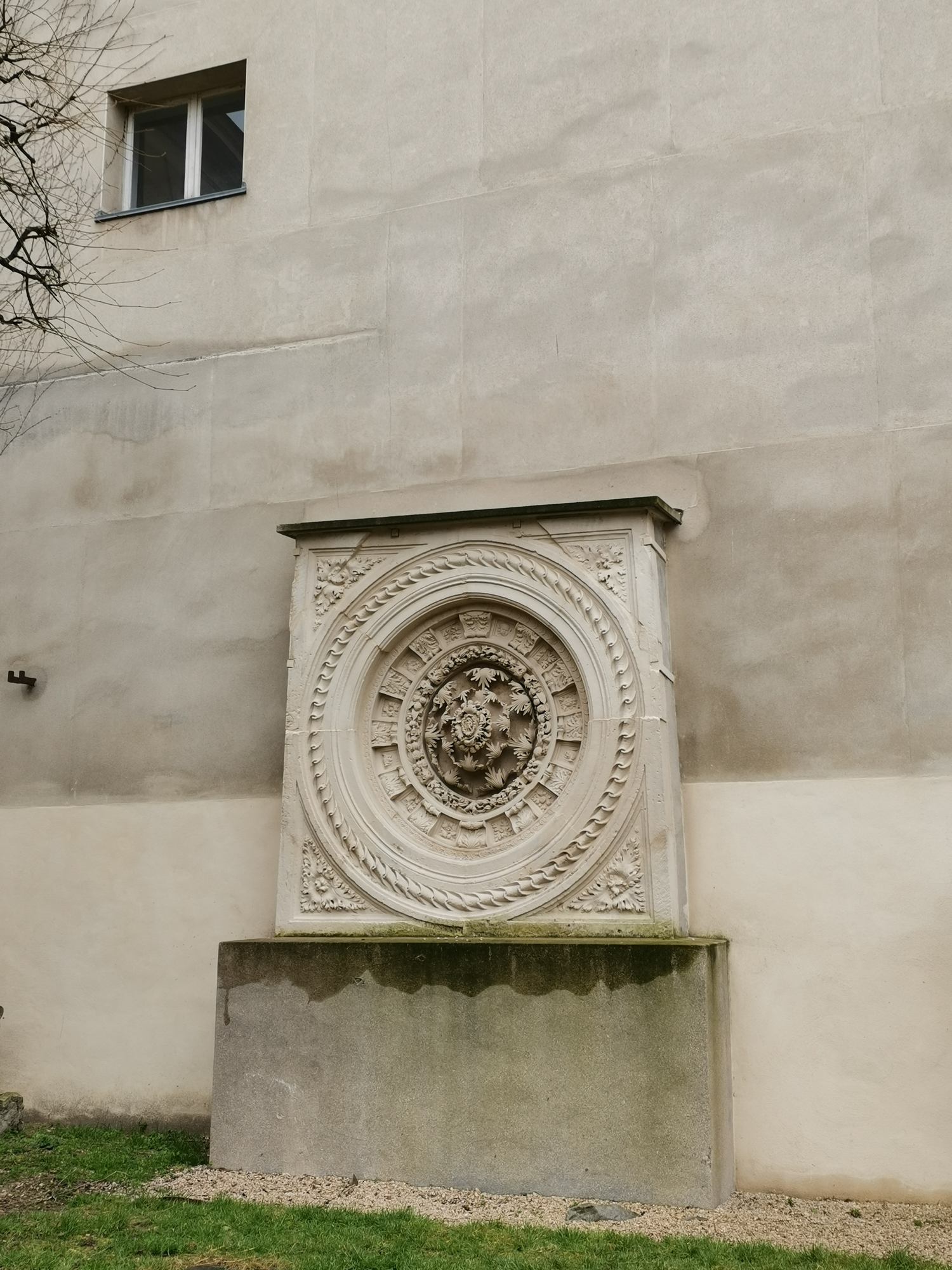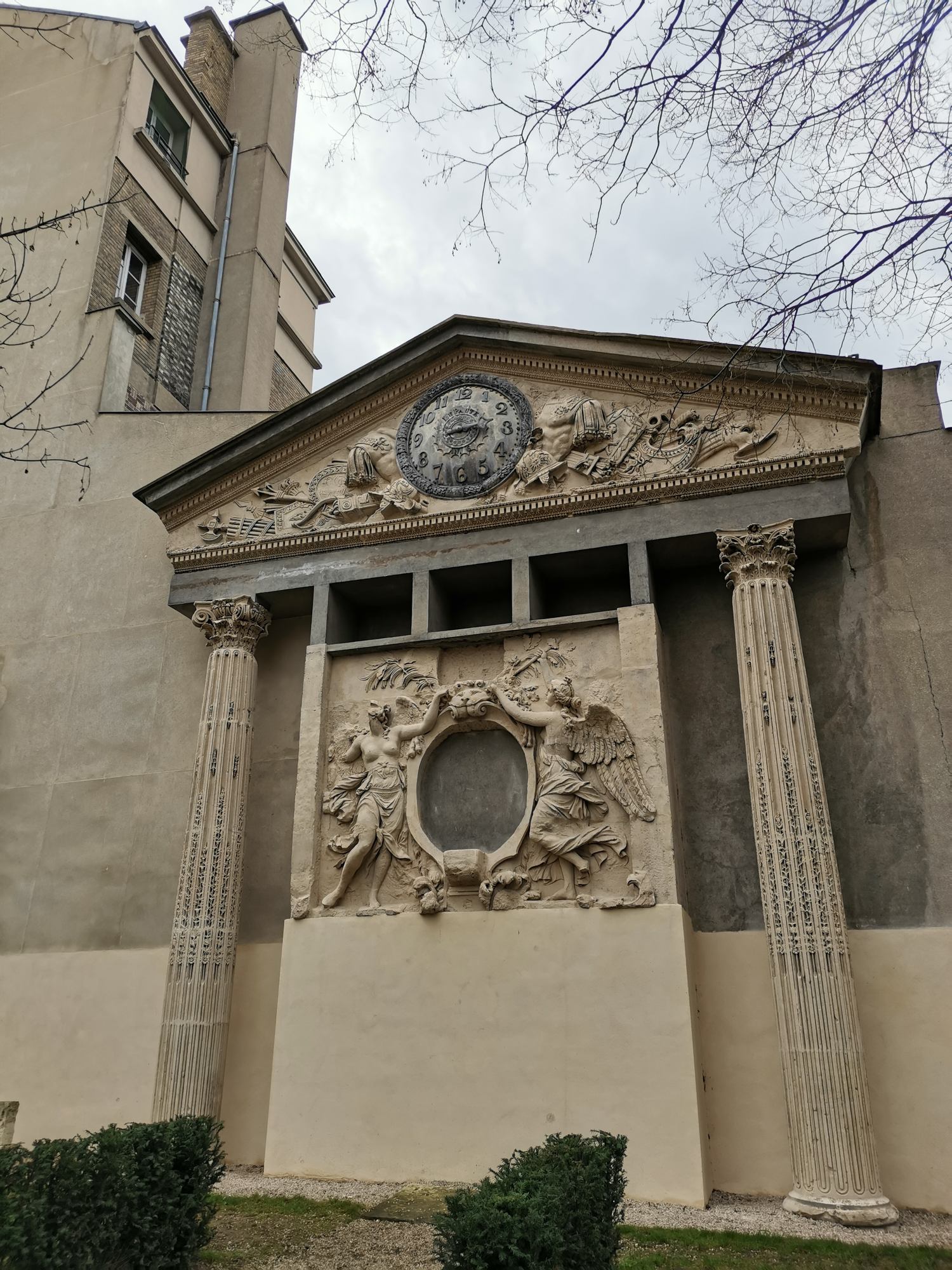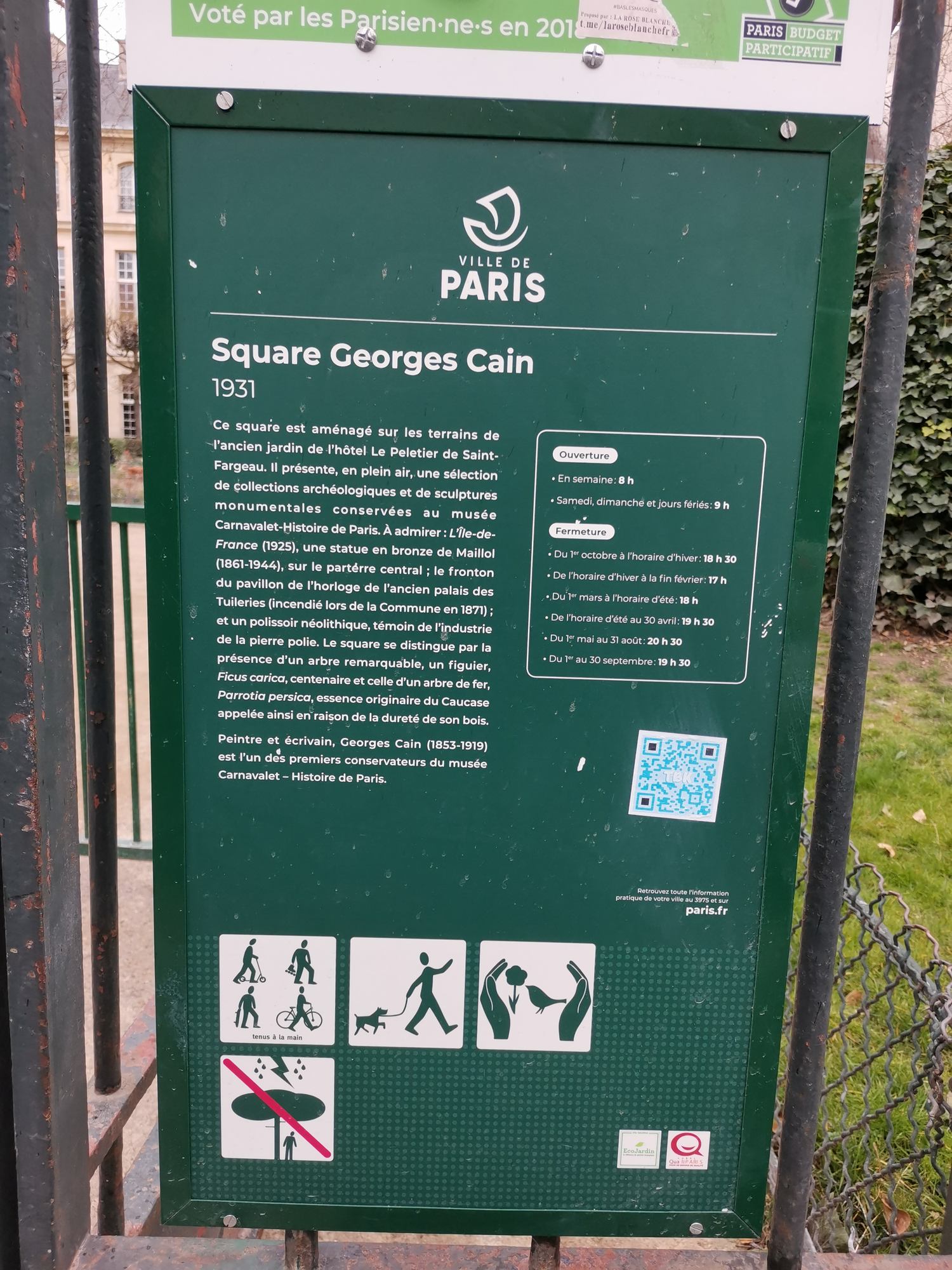Georges Cain Square
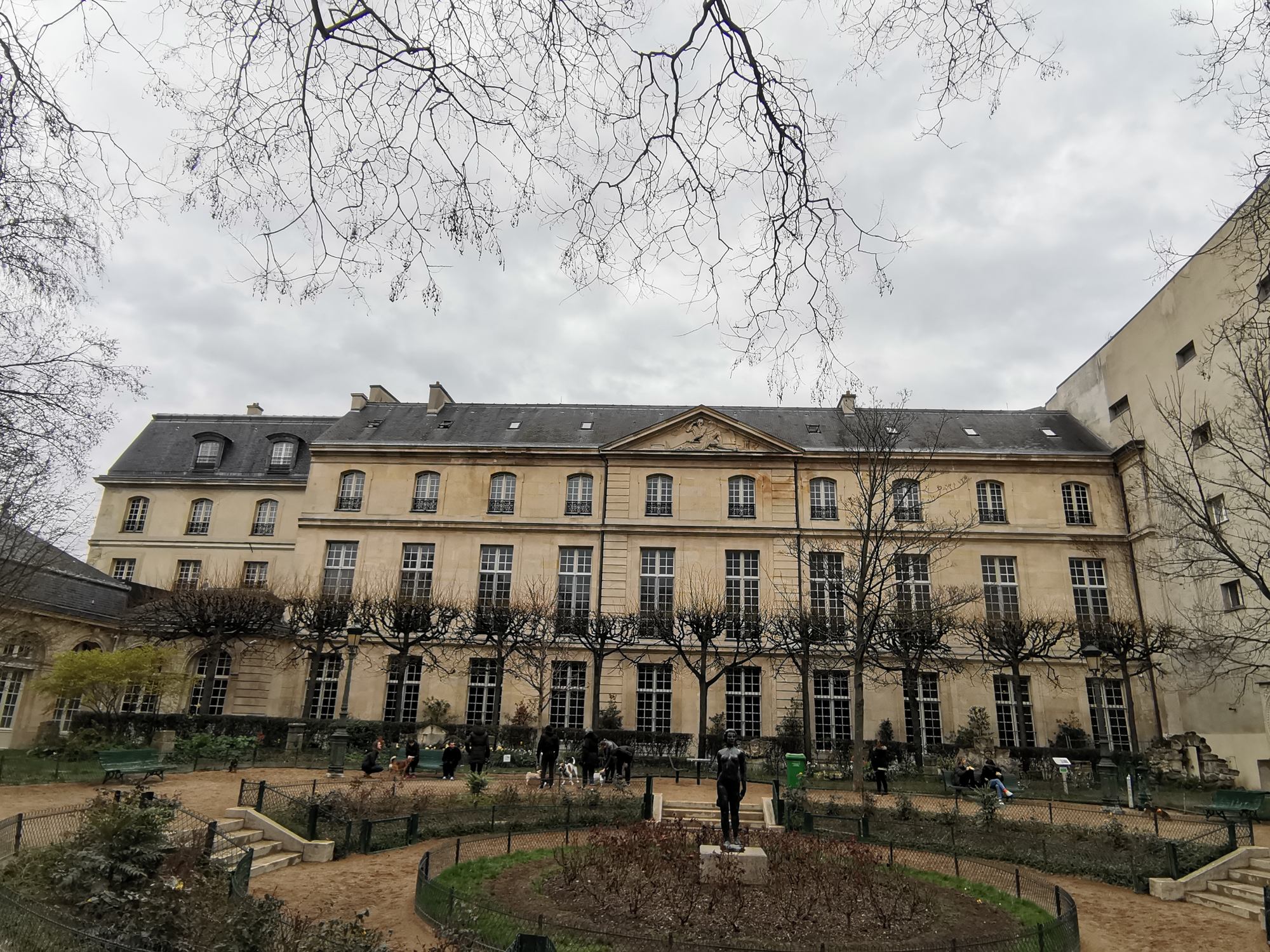 Created in 1923, the square extends over 2,128 m2. Bordered to the north and east by the Musée Carnavalet (to the east, the Hôtel Le Pelletier de Saint-Fargeau, and to the north, its former orangery), and to the south by the Lycée Victor-Hugo, it is enclosed to the west by a gate overlooking Rue Payenne.
Created in 1923, the square extends over 2,128 m2. Bordered to the north and east by the Musée Carnavalet (to the east, the Hôtel Le Pelletier de Saint-Fargeau, and to the north, its former orangery), and to the south by the Lycée Victor-Hugo, it is enclosed to the west by a gate overlooking Rue Payenne.Built on the site of a large market garden known as “culture Sainte-Catherine”, owned by the canons of Sainte-Catherine-du-Val-des-Écoliers since the 13th century, the garden has been open to the public since 1931.
Dogs are allowed in the square.
Description
At the center of the garden, in the middle of a flowerbed, stands a bronze statue of a nude young woman, standing, holding a scarf behind her back. This work by Aristide Maillol, called Île de France, replaced an earlier sculpture by Philippe Magnier entitled Flore et son char.
All around the square, on the walls and in the corners, archaeological finds from the history of Paris are scattered in an anarchic order and without any museographic indication. These include the Renaissance remains of the former Hôtel de Ville, the pediment of the central pavilion (and its clock) of the Palais des Tuileries, still blackened by the fire that destroyed it during the Commune, and Merovingian sarcophagi.
This “Carnavalet museum lapidary deposit” was nourished by the civil war of 1871 and the dispersal of the collections of the first museum of French monuments, as well as a few fragments of sculptures and pediments from the Paris salt granary. Moss and acid rain have considerably damaged them.
The heavily shaded square is planted with numerous tree species, including a fig tree over 6 m high.
Summary of gardens and squares in the Marais
Some photos of Square Georges Cain
